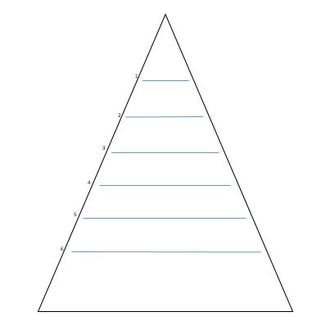This installment of "Lit Tips" focuses on the skill of summarization - a skill we assume high school students should have well in hand, but often find out the contrary.
Summary /ˈsəmərē/ : a brief statement or account of the main points of something.
synonyms: abridged, abbreviated, shortened, condensed
What do you often get when you ask students to summarize – a paraphrase, a retelling, something unintelligible? Often, I’m not sure students know exactly what we mean by “summary.” They may have been told somewhere along the way, but can we be sure? I hypothesize that students often think of summarization as retelling or paraphrasing, when in fact it means to boil down to only the most critical. Yes, theyshould now what it is by now and how to write one, but what if they don’t, or they’re not sure?
We must be explicit in what we ask of them, and in some cases teach or re-teach skills we think they should have mastered by now.
Summarization is a skill that is specifically addressed in the Common Core Literacy Standards:
Reading Standards for History/Social Studies: CCSS.ELA-LITERACY.RH.9-10.2
Determine the central ideas or information of a primary or secondary source; provide an accurate summary of how key events or ideas develop over the course of the text.
Reading Standards for Science/Technical Subjects: CCSS.ELA-LITERACY.RST.9-10.2
Determine the central ideas or conclusions of a text; trace the text's explanation or depiction of a complex process, phenomenon, or concept; provide an accurate summary of the text.
Over the next couple of weeks, I’ll be sending out a few summarization strategies that can be adapted for any content. Our first one is called “Pyramid Summary.”
You may use the template attached, have students draw it themselves, or create your own. For each line, give instructions in this pattern:
Line 1: Character’s name
Line 2: Two words describing the character
Line 3: Three words describing the setting
Line 4: Four words stating the problem
Line 5: Five words describing one event
Line 6: Six words describing another event
Line 7: Seven words describing a third event
Line 8: Eight words describing the solution to the problem
…or for Social Studies:
Line 1: One word for a significant location
Line 2: Two words describing location
Line 3: Three words describing climate of the location
Line 4: Four words describing location’s impact on people living there
Line 5: Five words describing conflicts in this area
…and so on…
How could other content areas adapt the pyramid?
Students will then write a summary using their pyramid as a guide.
Summary /ˈsəmərē/ : a brief statement or account of the main points of something.
synonyms: abridged, abbreviated, shortened, condensed
What do you often get when you ask students to summarize – a paraphrase, a retelling, something unintelligible? Often, I’m not sure students know exactly what we mean by “summary.” They may have been told somewhere along the way, but can we be sure? I hypothesize that students often think of summarization as retelling or paraphrasing, when in fact it means to boil down to only the most critical. Yes, theyshould now what it is by now and how to write one, but what if they don’t, or they’re not sure?
We must be explicit in what we ask of them, and in some cases teach or re-teach skills we think they should have mastered by now.
Summarization is a skill that is specifically addressed in the Common Core Literacy Standards:
Reading Standards for History/Social Studies: CCSS.ELA-LITERACY.RH.9-10.2
Determine the central ideas or information of a primary or secondary source; provide an accurate summary of how key events or ideas develop over the course of the text.
Reading Standards for Science/Technical Subjects: CCSS.ELA-LITERACY.RST.9-10.2
Determine the central ideas or conclusions of a text; trace the text's explanation or depiction of a complex process, phenomenon, or concept; provide an accurate summary of the text.
Over the next couple of weeks, I’ll be sending out a few summarization strategies that can be adapted for any content. Our first one is called “Pyramid Summary.”
You may use the template attached, have students draw it themselves, or create your own. For each line, give instructions in this pattern:
Line 1: Character’s name
Line 2: Two words describing the character
Line 3: Three words describing the setting
Line 4: Four words stating the problem
Line 5: Five words describing one event
Line 6: Six words describing another event
Line 7: Seven words describing a third event
Line 8: Eight words describing the solution to the problem
…or for Social Studies:
Line 1: One word for a significant location
Line 2: Two words describing location
Line 3: Three words describing climate of the location
Line 4: Four words describing location’s impact on people living there
Line 5: Five words describing conflicts in this area
…and so on…
How could other content areas adapt the pyramid?
Students will then write a summary using their pyramid as a guide.

 RSS Feed
RSS Feed
